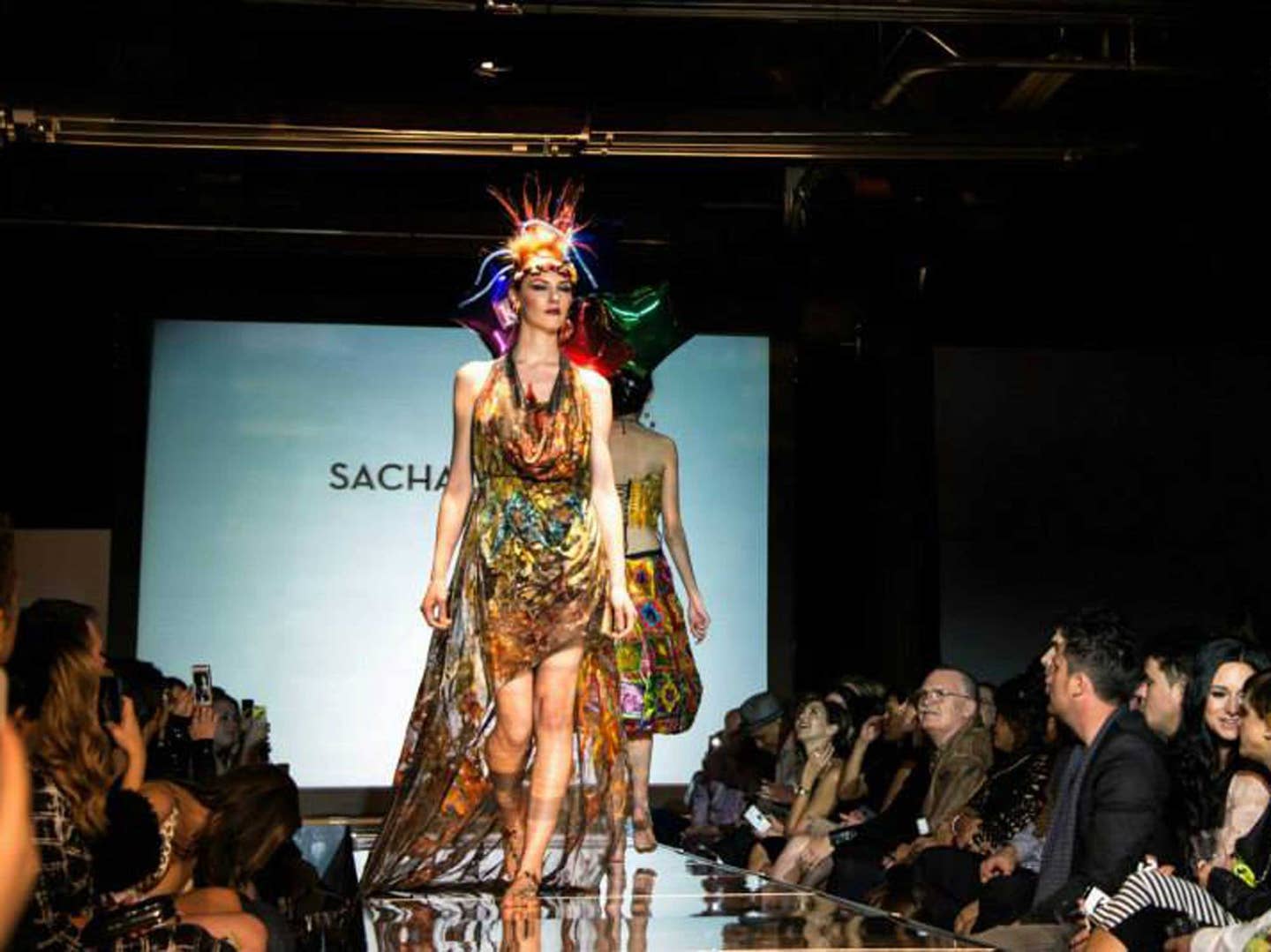
The Kombucha Dress is the Ultimate No-Waste Fashion Move
The tea’s bacteria residue can be dehydrated and turned into faux leather, canvas, and even silk
The words "edible fashion" might call to mind the image of candy underwear, but there's actually a whole industry dedicated to creating sustainable clothing from food and food waste for the purpose of waste-reduction rather than seduction.
Perhaps best known in the eco-friendly food-as-fashion movement is kombucha, the fermented drink that's been both lauded for its alleged health benefits and ridiculed as a hipster food fad. According to National Geographic, the bacteria left after brewing kombucha can be dried to create a versatile material that can mimic the texture of faux leather, canvas, or even silk. It's the premise of Kombucha Couture, a project started by California designer Sacha Laurin.
If you've made your own kombucha before, you know there's a "mother" of SCOBY, or symbiotic colony of bacteria and yeast, that resembles a floating brown blob. During the the week-long fermentation process, the asexual "colony" can reproduce by feeding on sucrose, yielding offspring that can be used to produce more of the tea. Laurin, a cheesemaker by trade, was drawn to the material not only for the similarities between growing a SCOBY and producing cheese, but also for its versatility and durability. Her clothing, a mix of bold haute couture and daily custom-wear, has been featured at Sacramento Fashion Week and Paris Fashion Week.
Beyond kombucha, scientists, start-ups and clothing manufacturers alike are pushing the boundaries of what can be used to make clothing, from a company in Sicily that's repurposing citrus peels to Filipino farmers exporting pineapple leaves as a natural canvas material. In a time when both the worlds of food and fashion are in desperate need of sustainability, kombucha couture is giving us a little bit of hope.
Keep Reading
Continue to Next Story










